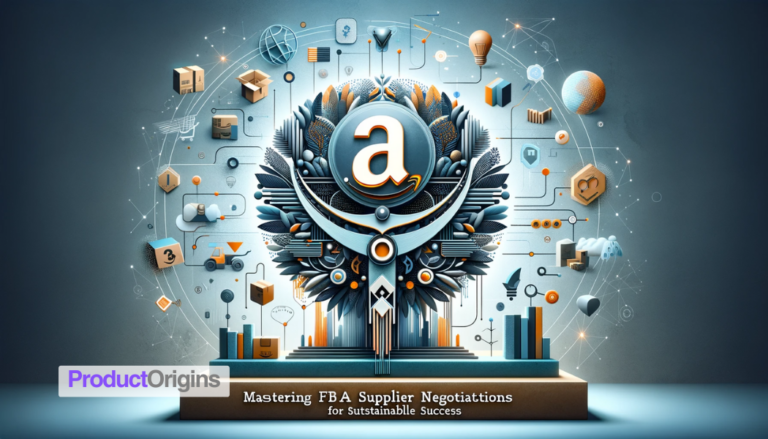The e-commerce landscape is fiercely competitive, and Amazon is the go-to platform for millions of shoppers. As an Amazon seller, visibility and product discoverability are crucial for success. This is where listing optimization comes in – strategically crafting product listings to attract potential customers and convert them into buyers.
In this comprehensive guide, we’ll unpack the most effective strategies for enhancing your Amazon listing performance, diving deep into proven techniques for boosting rankings, traffic, and sales.
Understanding the Landscape
Before digging into specific optimization tactics, we must examine the broader e-commerce landscape and customer mindset. This context will allow us to craft targeted strategies that truly move the needle.
Why Optimize Your Listings?
With over 12 million products available on Amazon, standing out is a challenging feat. The default product page template does little to showcase what makes your offering unique. Without optimization, you’ll likely struggle with:
- Low visibility: Your listing gets buried, rarely appearing on the first search results page where most clicks happen.
- Low conversion rates: The few visitors you get leave without converting because your listing fails to engage them.
- Difficulty competing: Large brands with optimized listings dominate while you languish with subpar discoverability.
- Missed revenue: All the above culminates in lost sales opportunities and failure to maximize your earning potential.
By optimizing your listings, you can craft compelling pages that engage visitors and nudge them towards purchase. Well-optimized listings allow you to punch above your weight class, competing with more established brands.
Listings are the storefront for your products — optimize them properly and reap the revenue rewards!
Unraveling User Intent
To create high-converting listings aligned with searcher needs, you must first understand user intent – what is the customer trying to achieve, or what questions are they trying to answer?
For a search like “strategies for enhancing Amazon listing performance,” typical user intent includes:
- Learning techniques to improve product rankings and visibility
- Discovering methods for driving more traffic to listings
- Understanding how to boost listing conversion rates
- Finding ways to stand out and compete with larger brands
Essentially, searchers want actionable tips for getting their listings noticed and driving sales.
We must align content with these search goals when optimizing listings while addressing common pain points like low traffic and poor conversion rates.
It also helps to have a handle on broader concepts (macro semantics) related to the topic as well as very specific details (micro semantics) users are seeking:
Macro semantics: Amazon SEO, keyword research, listing optimization best practices, conversion rate optimization
Micro semantics: Keyword targeting strategies, image optimization tactics, A/B testing, review generation ideas
Blending high-level context with detailed recommendations allows you to create listings that fully satisfy user intent.
Now, let’s explore the step-by-step process for executing listing optimization successfully!
Keyword Research: The Foundation of Success
Finding the right keywords is the cornerstone of Amazon listing optimization. Keywords allow you to align with searcher intent, target relevant product categories, and improve discoverability.
Identifying Seed Keywords
Start by brainstorming a list of broad, high-level keywords related to your product category and attributes. These “seed keywords” form the foundation for further research.
For example, a set of seed keywords for a reusable water bottle might be:
- Water bottle
- Reusable bottle
- Insulated bottle
- Leakproof bottle
- BPA-free bottle
Spend time upfront building this initial list of relevant terms. You can also utilize keyword research tools like SellerApp and Jungle Scout to discover additional related keywords.
Cast a wide net here – we’ll narrow it down later.
Diving Deeper with Keyword Research Tools
Next, plug those seed keywords into tools like SellerApp, Jungle Scout, and Helium 10 to uncover more specific, targeted phrases with higher conversion potential.
These tools analyze search volume data to estimate the following:
- Monthly searches: How often a keyword is searched each month. High numbers indicate higher potential traffic.
- Competition levels: How many listings target a keyword, a proxy for difficulty ranking highly.
- Keyword opportunities: Related long-tail variations with good search volume but lower competition.
Keyword research tools provide data-driven insight
Look for keyword opportunities in the “sweet spot” – decent search volume combined with relatively low competition for your niche. This analysis forms the basis for your targeting strategy.
Mastering Long-Tail Keywords
In particular, pay close attention to long-tail keywords revealed by your research. These ultra-specific variations may only have a few monthly searches but convert exceptionally well.
For example, the seed keyword “water bottle” has a high search volume but lots of competition from major brands. However, a long-tail variation like “wide mouth 32 oz insulated reusable water bottle” is more targeted to user intent.
The advantages of long-tail keywords include:
- Increased conversion rates: Users find exactly what they want rather than a broad range of irrelevant products.
- Lower competition: Niche long-tail terms should be addressed by bigger brands, leaving open opportunities.
- Higher relevancy: Google recognizes your listing matches the searcher’s intent closely.
- Improved click-through rate: More relevant visibility = more clicks, and traffic is driven to your listings.
A good target split to aim for is 70% core keywords (reasonable search volume) and 30% long-tail keywords (laser-targeted phrases). This balance allows you to drive sufficient traffic while maintaining strong conversion potential.
Learn from Your Competitors
Conducting competitor analysis is another fantastic way to identify strong keyword targets being utilized by top-ranking listings in your niche:
- Search Amazon for relevant products and browse the top search results
- Use the “view source” function to analyze page HTML
- Search for the “keywords” meta tag – this shows keywords being targeted
- Compile a list of effective keywords used by competitors
- Identify any gaps not yet targeted by other listings
Use view source to unpack competitor keywords
This recon reveals proven keywords aligned with your niche and opportunities to target untapped search terms.
Negative Keywords: Keeping Irrelevant Searchers at Bay
Finally, consider leveraging negative keywords to filter out irrelevant searchers uninterested in your offerings.
Negative keywords prevent your listings from appearing for searches unrelated to your products. For example, the water bottle seller would add negatives like:
- Beer bottle
- Wine bottle
- Glass bottle
This reduces wasted ad impressions and keeps your listings focused on targeted, relevant searchers.
Optimizing for Keywords: Weaving the Magic Spell
You’ve uncovered your keyword targets. Next, we must seamlessly incorporate them into your listing for improved visibility and organic search rankings.
Title Transformation: The First Impression
Your title is the very first element searchers see when browsing products. A compelling, keyword-rich title can spark immediate interest and clicks.
Tips for optimizing Amazon titles:
- Lead with primary keyword: Incorporate your main keyword target early in the title for optimal visibility and search relevancy.
- Sprinkle secondary keywords: Naturally, blend 1-2 complementary keywords in the title to increase visibility for those terms.
- Keep it concise: Titles can be cut off after ~80 characters on product pages, so brevity is key.
- Spark curiosity: Use emotional language, imagery, or intrigue to make searchers eager to know more.
- Be specific: Share tangible details and avoid generic claims like “best product ever.” Quantify benefits.
- Enhance readability: Use title case capitalization and avoid ALL CAPS for easy scanning.
Let’s look at some examples of captivating, keyword-optimized titles:
- Instead of: “Wireless Headphones”
- Try: “Crystal-Clear Sound: Premium Noise Cancelling Wireless Headphones for Immersive Audio”
- Instead of: “Coffee Mug”
- Try: “The Perfect Wake-Up Ritual: 12-Hour Heat Retention Stainless Steel Insulated Coffee Mug for All-Day Caffeine Enjoyment.”
- Instead of: “Pet Toy”
- Try: “Tough Yet Cuddly: Long-Lasting Plush Dog Toy for Interactive Playtime.”
These compelling titles blend keywords seamlessly, using emotional cues and vivid details to spark interest.
Description Decoding: Where Your Product Shines
While the title may convince searchers to click, the listing description seals the deal by providing the full context to compel purchase. Master these description best practices:
- Hook with benefits: Explain how your features satisfy customer needs better than competitors.
- Speak plainly: Use simple, clear language easily understood by the average reader. Avoid overly technical jargon.
- Showcase differentiation: What makes your product uniquely awesome? Play up your competitive advantages.
- Substantiate claims: Back up assertions with stats, awards, certifications, or customer reviews.
- Weave in keywords: Related keywords woven organically into copy pass relevancy signals to Amazon’s algorithm.
- Adopt scannable formatting: Chunk text using bullet points, bolded subheads, and short paragraphs for easy skimming.
- Share success stories: Anecdotes and customer quotes build trust and credibility efficiently.
- Close with a CTA: End with a clear call-to-action driving searchers to purchase.
Check out these excerpts from keyword-focused yet compelling product descriptions:
Imagine waking up to a steaming cup of coffee that stays hot for hours. Our double-walled stainless steel mug keeps your coffee at the perfect temperature so you can savor every sip throughout your morning routine. Expertly crafted from food-grade 18/8 pro-grade steel, this mug is durable, leak-proof, and wonderfully easy to clean. Plus, it fits standard cup holders for on-the-go enjoyment. With over 3,000 5-star reviews, customers agree this is the last coffee mug you’ll ever need!
Unleash your dog’s inner pup with our ultra-durable plush squeaky toy! This lovable little elephant toy promotes healthy play, satisfies your dog’s instinct to chew, and provides endless entertainment they’ll adore. Carefully constructed with premium, long-lasting materials, and double-reinforced seams, this toy withstands even the most enthusiastic chompers. Plus, the interior squeaker and crinkle paper stimulate curiosity and interactivity. One delighted pet parent said, “Being obsessed with squeaky toys, this long-lasting plush elephant is a lifesaver for keeping my heavy chewer occupied for hours!”
These excerpts demonstrate关键词, supplemented by compelling and benefit-focused copy. Description optimization is truly an art and science!
Now that we’ve built a solid keyword foundation and optimized core listing content let’s explore some advanced tactics to propel your listings even further.
Advanced Strategies: Taking Your Listing to the Next Level
Moving beyond keyword and content optimization, you can utilize advanced techniques like A/B testing, Amazon PPC ads, and review generation to unlock the full potential of your listings.
A/B Testing: The Science of Optimization
Even minor changes can hugely impact listing performance. That’s where A/B testing comes in handy.
The process looks like this:
- Create two nearly identical listings with slight variation
- Show to an evenly split audience for a set period of time
- The better-performing variation “wins.”
- Double down on what works by making it the new default
For example, you could test:
- Long vs. short title
- Different main keywords
- Varied description structure
- Add or remove bullet points
- More or less images
- Long vs short product videos
Keep refining and testing new permutations to continuously improve your listings. Over time, these small gains compound into major lifts!
PPC Powerhouse: Boosting Visibility with Amazon Advertising
Investing in Amazon PPC ads allows you to amplify your product visibility and rankings.
Some best practices include:
- Laser-focused targeting: Combine your buy box keyword targets with high-relevancy negative keywords to hone in on warm traffic
- Compelling ad copy: Feature emotional benefits in your title and final call to action driving to your listing
- Aggressive early bids: Bid high initially while your PPC campaign ramps up and then optimize bids down to balance conversions with ROI
- Ongoing split testing: Try different keyword targets, match types, landing pages, creatives, and more to determine what resonates best with your audience
- Meticulous tracking: Obsessively monitors campaign performance leveraging self-service dashboards. Slice and dice data by keyword, match type, time of day, and device, and continually prune low performers and poor converters while doubling down on proven winners.
Efficiently invested advertising dollars reinforce your organic efforts for expanded visibility and revenue.
Review Revolution: Building Trust and Credibility
Positive product reviews and ratings act as “social proof,” building buyer confidence while also boosting search rankings:
- Make it easy to review: Send email and on-site prompts encouraging happy customers to leave reviews. Highlight it’s a quick, simple process!
- Highlight unique experience: What emotions did your customers feel or needs did your product address? Remind them to emphasize these angles.
- Respond promptly: Quickly replying to reviews shows you care, converting fence-sitters. Thank satisfied customers and offer to make amends to unsatisfied shoppers.
- Feature prominently: Rotating top reviews in your description or images boosts conversions while allowing you to reinforce key differentiators.
The more detailed, authentic reviews you can generate, the more buyers will trust and connect with your brand over competitors.
Staying Ahead of the Curve: Embracing Change
Amazon’s search algorithm continually evolves. New policies roll out frequently. Customer expectations rise over time.
Never get complacent! Commit to:
- Regular audits: Re-evaluate keywords, calibrate bids, refresh creatives
- Ongoing education: Read blogs and forums to learn the latest Amazon developments
- Prompt adaptation: Update strategies quickly when changes are detected
- Continuous testing: Always experiment with new approaches to stay ahead
The minute you stop optimizing is the minute your listings go stale. Stay vigilant!
Conclusion: Optimize, Analyze, Repeat!
Listing optimization is an iterative, evolving process. There is always room for improvement. Let’s recap some key takeaways:
Key Takeaways: Your Actionable Checklist
To optimize your Amazon listings for maximum performance, ensure you:
- Conduct rigorous keyword research combining seed terms, long-tail expansions, tools for search volume data, and competitor analysis
- Flawlessly incorporate primary, secondary, and long-tail keywords into titles, descriptions, and backend search optimization fields.
- Prioritize benefit-focused copywriting that highlights differentiators and is substantiated by social proof elements.
- Experiment with advanced strategies like A/B testing various listing permutations and investing in Amazon PPC
- Obsessively monitor listing performance, adapting to algorithm changes, and doubling down on what works.
This checklist will serve you well on your optimization journey!
The Journey Awaits: Start Optimizing Your Listings Today!
The competitive Amazon landscape rewards well-optimized listings. You now have the blueprint for unlocking the full potential of your product pages to drive organic and paid discovery.
It’s time to get started! Brainstorm relevant seed keywords, intensify your research using helpful data-driven tools, and blend keywords seamlessly into the compelling listing copy.
Dive into advanced optimizations like A/B testing promising variations. And don’t forget to track performance daily, iterating based on insights uncovered.
The opportunities to boost product visibility and connect with high-intent searchers are boundless. Follow this guide and rapidly scale your Amazon business today!







